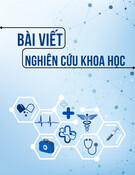
THROMBOPHILIA
What is thrombophilia?
Thrombophilia is a condition where the blood forms clots more easily than
normal, which can lead to unwanted blood clots in the body. There are different
kinds of thrombophilia.
What causes thrombophilia?
Thrombophilia occurs if the normal balance of the clotting system is upset. There
may be too much of a clotting factor, or too little of a factor that opposes clotting.
Congenital
Common types; most common causes are hyperactivity of procoagulants or
type II,[9] which are more severe than type I:
• Factor V Leiden
• Prothrombin mutation
• High homocysteine levels due to MTHFR mutation or vitamin deficiency
(vitamins B6, B12 and folic acid).
• Sickle-cell disease (only small risk)

Rare forms, most being deficiency of anticoagulants or type I (less severe)
• Antithrombin III deficiency.
• Protein C deficiency.
• Protein S deficiency.
• Plasminogen and fibrinolysis disorders (very rare)
Acquired
Causes posing high risk for thrombosis:
• Antiphospholipid antibodies
anti-cardiolipin antibodies and/or
lupus anticoagulants
• Heparin-induced thrombocytopenia
• Paroxysmal nocturnal hemoglobinuria
Lower risk for thrombosis:
• Nephrotic syndrome
• Hyperestrogenemia
• Estrogen-containing hormonal contraceptives
• Tobacco smoking
What are the symptoms of thrombophilia?

There are two types of blood clots: clots in arteries and clots in veins.
Clots in veins are the most common type with thrombophilia - this is called a
'venous thrombosis'. Possible symptoms are:
•Pain and swelling in a leg. This occurs if you have a blood clot in a large vein in a
leg. This is commonly known as a 'deep vein thrombosis' or 'DVT'.
•The clot may travel to the heart and on into a lung, causing a 'pulmonary embolus'
or 'PE'. Possible symptoms are chest pain, pain on deep breathing, shortness of
breath or rarely, collapse.
•Some types of thrombophilia can cause clots in unusual sites, such as the brain,
gut or liver. This can cause symptoms in the head or the abdomen (tummy). Clots
in liver veins are called 'Budd-Chiari syndrome'.
Clots in arteries can occur with some types of thrombophilia. Clots in arteries can
cause a stroke, a heart attack or problems with the placenta during pregnancy. So
the possible symptoms of artery clots due to thrombophilia are:

•Having a stroke at a relatively young age
•Repeated miscarriages
•Pregnancy problems: pre-eclampsia, reduced fetal growth or rarely fetal death
•A heart attack
How is thrombophilia diagnosed?
The first test is a ‘thrombophilia screen’ which is some basic clotting tests. If the
results of this suggest that thrombophilia is possible, then another blood sample
will be taken for more detailed tests. You may be referred to a haematologist (a
doctor specialising in blood conditions). The doctor will usually ask about your
history and family history, which will help with interpreting the test results.
What is the treatment for thrombophilia?
The inherited disorders that cause thrombophilia are incurable. People who have
had two or more clots are especially likely to be advised to take the anticoagulant
warfarin for the rest of their lives. When a person has had only one clot, warfarin
or heparin to prevent future clots may be used only when the person is at higher
risk for clot formation, including during a period of prolonged bed rest.
People with hyperhomocysteinemia may be advised to take vitamin supplements
with folic acid, vitamin B6 (pyridoxine), and vitamin B12 (cobalamin), which can
reduce homocysteine levels. However, it is unclear whether these supplements
also reduce clot formation.


























